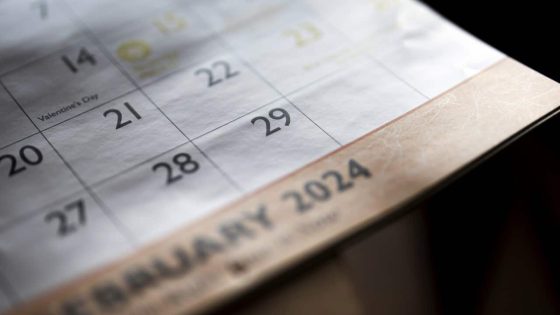Key Points
- 2024 is a leap year, meaning the month of February will have 29 days instead of the usual 28.
- Leap years are held to align the calendar with Earth’s movement around the sun.
- In 1712, February had 30 days in Sweden while the country attempted to adjust its calendar.
February is the shortest month in the calendar year, and usually has just 28 days. But every four years, a leap year occurs, and the month has 29 days.
But in one country, for one year, February had 30 days.
So what happened in Sweden in 1712, why was the calendar changed, and what is a leap year?
When did February have 30 days?
For many years, most countries in the Western world followed the Julian calendar, named after Julius Caesar.
This calendar followed a four-year cycle, with three years having 365 days and the fourth having 366.
In 1582, Pope Gregory XIII’s Gregorian calendar was introduced, designed to keep the calendar more accurately aligned with seasons and Easter.
Sweden did not initially make the switch. Towards the end of the 17th century, they opted to gradually adopt it, with a plan to skip leap years from 1700 to 1740 to reduce the gap between the Swedish and Gregorian calendars.
Sweden later decided to switch back to the Julian calendar, and to realign dates, the year 1712 had two leap days: 29 February and 30 February.
The country eventually switched to the Gregorian calendar in 1753.
What is a leap year and why do they exist?
Leap years take place every four years, and exist to keep the calendar matched up with Earth’s movements around the sun.
Earth takes approximately 365.24 days to complete a lap of the sun. After four years, the extra hours needed to complete the lap add up to almost a full day, which is when leap years are held.
If we did not have leap years, the seasons would drift over long periods of time, and events such as solstices and equinoxes would occur at different times than expected.
Adding an extra day, however, is a slight overcorrection, so there are some exceptions to leap year rules.
In years divisible by 100, leap years are skipped, unless the year is also divisible by 400. Therefore, while 2000 was a leap year, 1900 was not.
The next leap year to be skipped will be 2100.
Which countries follow different calendars?
Not all countries follow the Gregorian calendar.
Ethiopia has its own calendar, which has 13 months and is roughly eight years behind the Gregorian calendar.
Afghanistan and Iran use the Solar Hijri calendar, while Nepal uses the Vikram Samvat and Nepal Sambat.
Other countries use modified versions of the Gregorian calendar, while others follow multiple calendars.



